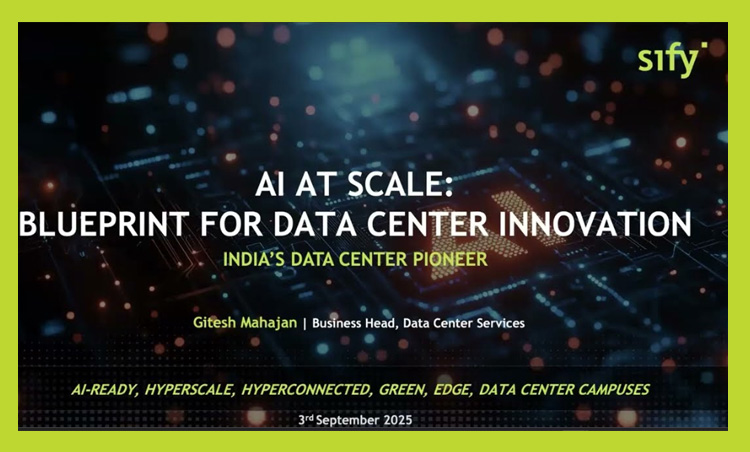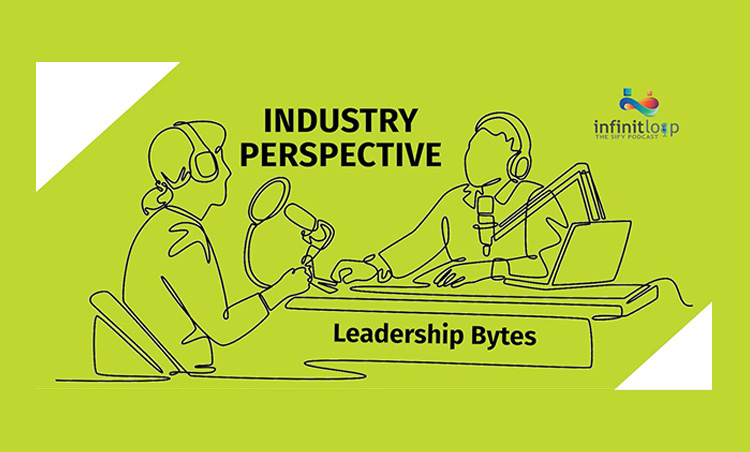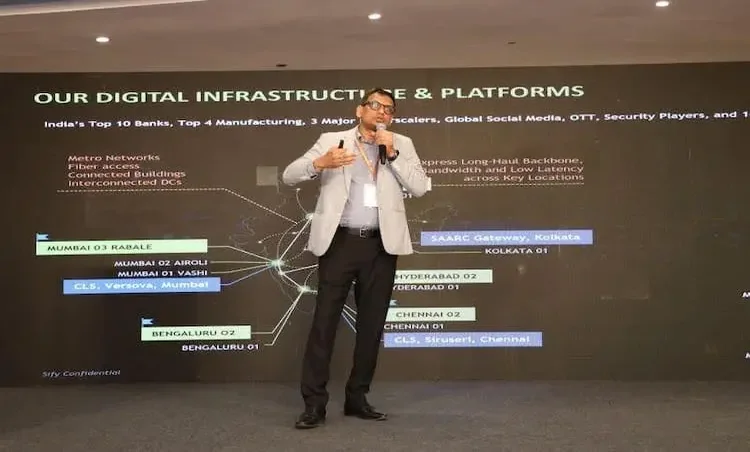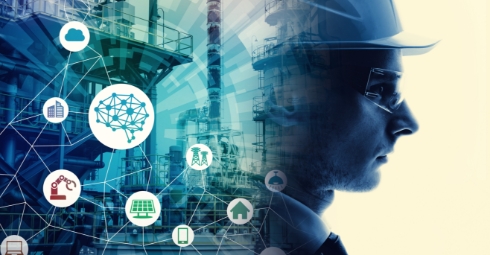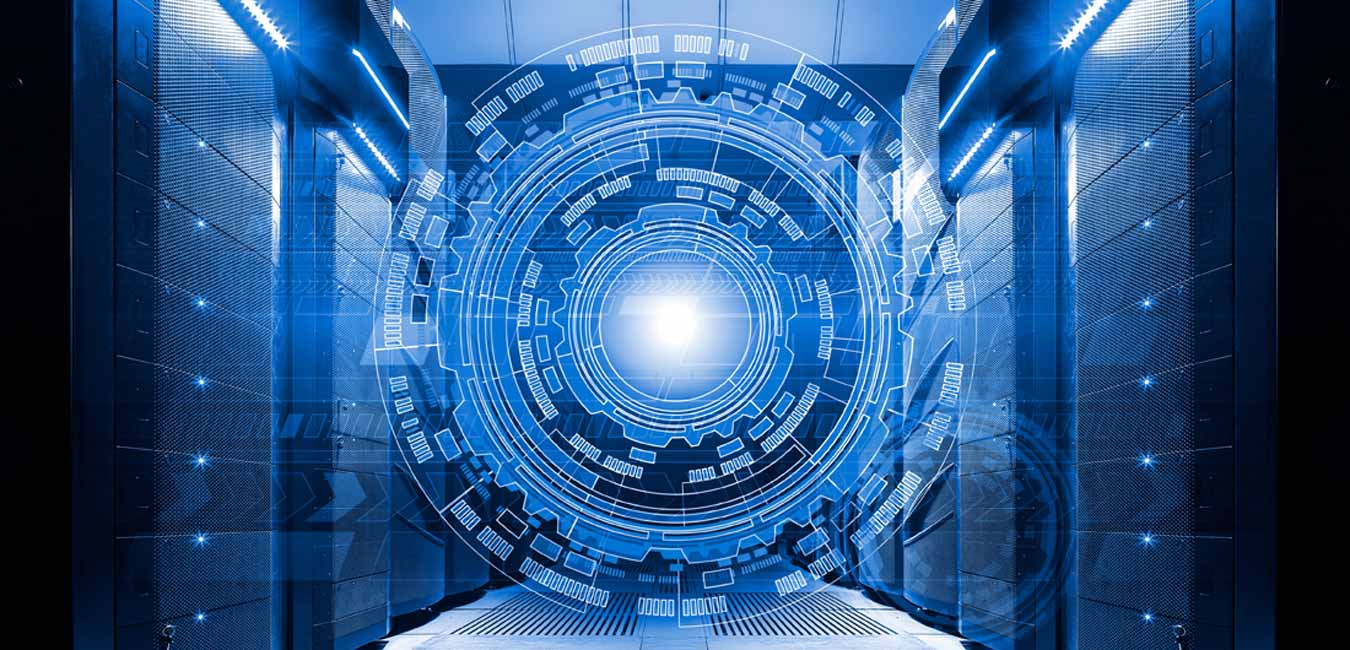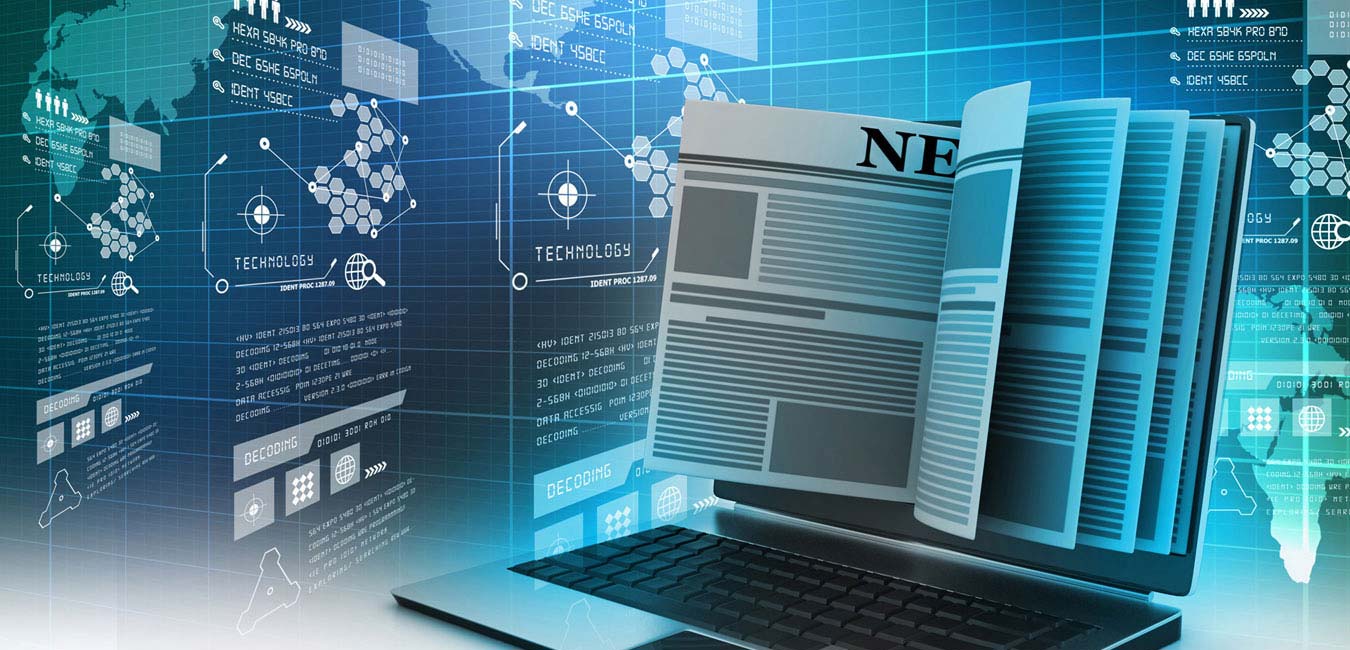AI at Scale: Blueprint for Data Center Innovation in Manufacturing
SPEAKERS: Suresh Gummaraju, General Manager Product – Network Managed Services, Sify Technologies Santhana Prasanth R, General Manager Product – Network Infrastructure Services,
Sify Technologies Arindam Sengupta, CIO, Wipro Consumer care and Lighting Bhargab Dutta, Chief Digital Officer, Century Plyboards Anil Kumar, Associate Director – Corporate Risk Management, Teva pharmaceuticals India
Leadership Byte 3: AI & Digital Transformation in Travel
Speaker: Dr. Shakti Goel, Chief Architect and Data Scientist, Yatra Online Limited Series: Infinit Loop Industry Perspective: Leadership Bytes Episode Summary: In this episode of Infinit Loop Industry Perspective: Leadership Bytes, we speak with Dr. Shakti Goel, Chief Architect and Data Scientist at Yatra Online, about how travel technology is evolving with the rise of digital integration and AI. The conversation highlights how APIs and microservices are reshaping the travel ecosystem, the growing role of AI and GenAI in enabling hyper-personalized experiences, and how changing customer expectations are driving innovation across the industry.
Leadership Byte 2: Technology, Digital Transformation & AI in Healthcare
Speaker: Aravind Sivaramakrishnan, CTO, Asia Healthcare Holdings Series: Infinit Loop Industry Perspective: Leadership Bytes Episode Summary: In this episode of Infinit Loop Industry Perspective:
Leadership Byte 1: Driving Digital Transformation: Leadership, Talent & AI
SPEAKERS: Gitesh Mahajan – Head, Data Center Business,Sify Technologies Limited Sojan Joy – Vice President, Product and Solutions Head, Data Center Services,Sify Technologies Limited
Sify at Vserv AI Conclave: Enabling AI-Driven Digital Transformation
Sushant Dubey presented strategies for AI adoption, cloud transformation, and intelligent enterprise infrastructure to accelerate business growth.
Rajat Gossain engaged with industry leaders in a Panel Discussion on sustainable IT solutions, AI-driven automation, and next-gen connectivity.
Sify looks forward to empower industries with AI-powered digital platforms and infrastructure to ensure scalability, productivity, and security across the hybrid IT landscape.
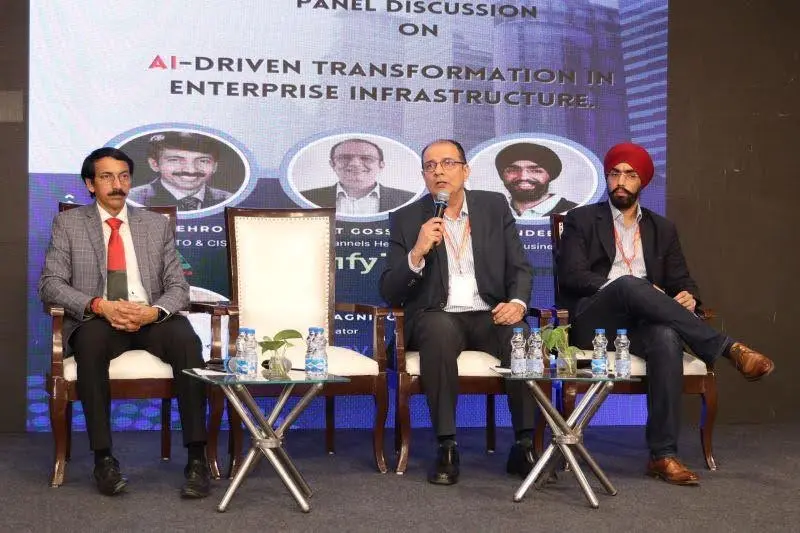
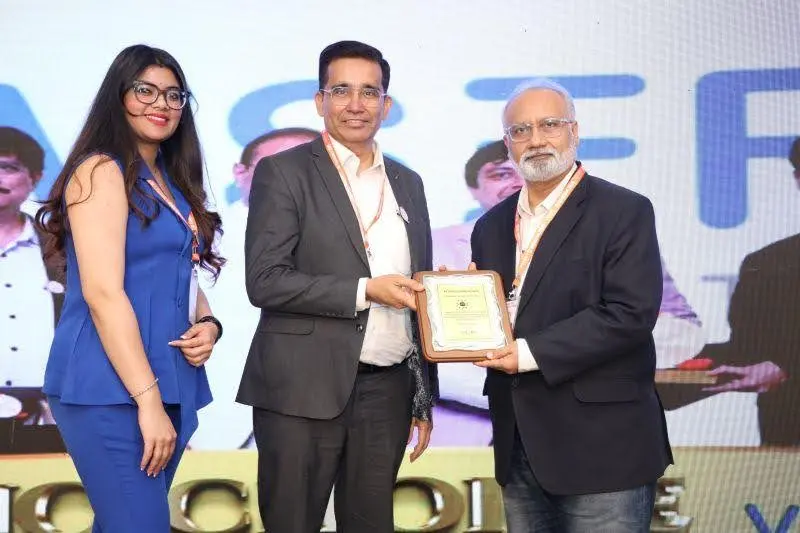
Sustainable Green Data Centers: How to Build Green IT Infrastructures
The rapid growth of enterprise data centers in India has led to an increasing focus on the concept of green data centers. Many businesses are now opting for alternative energy solutions for their data centers, as they offer numerous benefits. One key advantage is energy savings, which leads to cost reductions for businesses. Green data centers also contribute to environmental sustainability by reducing carbon emissions and optimizing the use of natural resources.
Comparing India’s data statistics to global figures as of 2021, India represents 18% of the global population but has lower Internet penetration, e-commerce shopping, social media users, and mobile subscribers, all at 14%. However, India’s total mobile data traffic is significant at 113 EB, and total media traffic is 588 EB. Currently, there are 138 operational data centers in India, utilizing 737 MW power. Over the next 3-4 years, an additional 50 data centers are expected to be established, resulting in a power demand of 1050 MW. In the next 7 years, the data center consumption is projected to exceed 3000 MW of IT load demand.
This level of enormous upcoming “data center capacity” has resulted in a significant increase in the volume of energy consumption by data centers, which can have a lasting impact on the environment, and finally result in climate change.
To solve this issue, the concept of sustainable data centers has come out to reduce the environmental impact of data centers while still meeting the growing demand for digital services. As per the Green Data Center Global Market Report 2023, the global green data center market is expected to grow to $139.93 billion in 2027 at a CAGR of 19.6% for the forecasted period 2023-2027.
With this, let’s deep dive into understanding sustainable data centers, advantages of green data centers, and how to build sustainable data centers.
What Are Sustainable Data Centers?
Simply put, a sustainable data center or a green energy data center is designed and operated with a focus on environmental and social sustainability.
- Sustainability in data centers involves the implementation of a variety of practices, such as the use of renewable sources of energy like solar or wind power.
- Green data centers also help optimize energy use through efficient cooling and lighting systems, reducing water usage, and utilizing eco-friendly building materials and technologies. Green data centers also help in promoting responsible waste management practices.
Sustainable data centers strive to balance their operational needs with environmental responsibility, making significant efforts to reduce energy consumption, greenhouse gas emissions, and water usage while promoting the adoption of renewable energy sources.
Advantages of Green Data Centers
Eco-friendly data centers are crucial for reducing the environmental impact of the IT industry in India. Building sustainable data centers demonstrates a company’s commitment to sustainability and corporate social responsibility. Here are a few benefits of Green Data Centers:
- Energy Efficiency: Green data centers employ various technologies and practices to optimize energy usage. They use energy-efficient servers, cooling systems, and power distribution mechanisms, reducing overall electricity consumption and carbon emissions.
- Reduced Carbon Footprint: Green data centers emit fewer greenhouse gases compared to traditional data centers. By adopting sustainable practices, they help combat climate change and contribute to global efforts to reduce carbon emissions.
- Renewable Energy Integration: Many green data centers rely on renewable energy sources such as solar, wind, hydroelectric, or geothermal power. By harnessing clean energy, these centers decrease their reliance on fossil fuels and contribute to a lower carbon footprint.
- Compliance With Environmental Regulations: Green data center solutions help companies comply with stringent government regulations aimed at reducing carbon emissions and promoting sustainability.
- Cost Savings: Green energy data centers offer economic advantages by reducing energy costs and improving overall efficiency. Through energy efficiency and the use of renewable energy sources, green data centers can significantly lower operational costs. Over time, these savings can be substantial and may offset the initial investment in green technologies.
- Enhanced Corporate Social Responsibility (CSR): Companies that invest in green data centers demonstrate their commitment to sustainability and environmental responsibility. This can boost their reputation and appeal to environmentally conscious customers and partners.
- Longer Equipment Lifespan: Green data centers often prioritize the use of high-quality, energy-efficient hardware. This can lead to longer lifespans for servers and other equipment, reducing electronic waste and the need for frequent replacements.
- Resilience and Disaster Recovery: Most green data centers are built with redundancy and resilience in mind, reducing the risk of data loss during power outages or other emergencies. This ensures critical data remains accessible and secure.
- Leadership and Competitive Advantage: By adopting green practices, companies can position themselves as industry leaders in sustainability. This can lead to a competitive advantage as customers and investors increasingly prioritize environmentally responsible organizations.
How to Build Sustainable Data Centers?
To build sustainable data centers, companies must adopt a range of proven strategies and technologies that minimize their IT infrastructure’s environmental impact, maximize energy efficiency, and reduce carbon emissions.
- Upgrade to New Equipment: While regular maintenance and repairs can improve equipment functionality, over time, equipment becomes less reliable and more expensive to maintain. Hence, data center companies must invest in good-quality, cost-friendly data center equipment, procured from a reputed vendor. It is more advantageous in the long run to avoid the costly risk of data center downtime caused by aging and faulty equipment.
- Optimize Energy Efficiency: The first step in optimizing energy efficiency is to choose energy-efficient hardware. Proper hardware and software configuration, such as implementing power management features, is also essential for optimizing energy efficiency. Data centers must accurately measure the consumption of energy in real time and create timely alerts to keep a check on energy usage, in order to optimize energy efficiency. Identifying alternate sources of energy also helps in optimizing energy efficiency.
- Intelligent Power Management: Managing power prudently can help optimize power usage and increase energy efficiency. Through intelligent power management, predictive analytics, and efficient data center infrastructure management, a data center can maximize resource utilization, minimize energy waste, and enhance overall sustainability. Intelligent monitoring, control, and allocation of power resources within a data center infrastructure can help boost the recovery time of devices that are managed remotely.
- Virtualization: Virtualization allows multiple virtual servers to run on a single physical server in a data center, which helps to optimize energy efficiency and reduce the environmental impact of multiple physical data centers. This not only improves data center resiliency but also makes a data center more sustainable.
- Using Renewable Energy Sources: Another way to reduce carbon emissions and improve sustainability is incorporating renewable energy sources into data center operations. It can involve various mechanisms like installing solar panels, wind turbines, or hydroelectric generators. Data centers can also invest in off-site renewable energy projects, such as wind or solar farms, that can offset their energy consumption.
- Modern Cooling Systems: Several strategies to improve cooling efficiency include using free cooling systems that use outside air to cool a data center instead of traditional air conditioning. Another option is liquid cooling, which uses a liquid coolant to directly cool server components. Installing efficient airflow management mechanisms improves the effectiveness of cooling systems and reduce energy usage. Optimizing airflow is a great way to ensure sustainability and reduce operational costs in data centers.
- Implementing Automation: Automated power management tools can optimize system settings for maximum energy efficiency. Several practices, such as turning off unused devices or putting servers into low-power states during periods of low usage, can improve energy efficiency. Sustainable data centers use software-based smart design principles to optimize energy efficiency and reduce environmental impact.
- Conduct Regular Energy Audits: Regularly monitoring and assessing energy usage and carbon emissions is essential for identifying areas for improvement and ensuring data centers remain as energy efficient as possible. Conducting energy audits can provide deeper insights into energy usage patterns, identify areas for improvement, and help prioritize energy-saving initiatives.
Meeting Data Center Sustainability KPIs
Measuring and monitoring sustainability performance through Key Performance Indicators (KPIs) is essential for data centers to assess their environmental impact, measure progress, and undergo continuous improvement. Some of these KPIs include:
- Power Usage Effectiveness (PUE)
- Water Usage Effectiveness (WUE)
- Carbon Usage Effectiveness (CUE)
- Server Utilization
- Recycling and Waste Management
- Greenhouse Gas Emissions
- Compliance with Sustainability Standards
Going Green With Sify Data Centers
With over two decades of thought leadership in IT infrastructure, Sify has been delivering transformative business value to enterprises across the globe. Sify provides carbon-neutral and energy-efficient data centers by incorporating renewable energy sources, optimizing power utilization, offsetting carbon emissions, and automation through AI/ML. While ensuring sustainability, we offer high-efficiency equipment that complies with green practices like adhering to ASHRAE guidelines, implementing a carbon abatement policy, and ISO 14001 Environmental Certification.
In 2022, Sify Technologies made a commitment to renewable energy for its data center business in India. We have made power purchase agreements (PPAs) with Vibrant Energy Holdings, a majority-owned subsidiary of Blue Leaf Energy Asia Pte. Ltd. Having contracted over 230 MW of green power, Sify is successfully making progress in reducing its customers Power Usage Effectiveness (PUE) and Water Usage Effectiveness (WUE)
Wrapping up!
To build a zero-carbon data center, one must follow a holistic approach that considers the entire lifecycle of the data center, right from the design and construction to ongoing operations and maintenance. By implementing a range of strategies and technologies that optimize energy efficiency and reduce carbon emissions, data center operators can build green IT infrastructures that are environmentally friendly and economically sustainable.
Learn more about Sify green data centers now!
All-round threat protection through advanced AI/ML technology
World’s leading glass manufacturer secures endpoint devices using sophisticated, cloud-based threat prevention, detection and response on and off network
Project Objective
Providing the ultimate endpoint security platform that combines NGAV, for prevention, and EDR to detect the malicious activities that might make their way around the antivirus solution. This combination gives organizations confidence for both prevention and detection against even the most advanced, targeted attacks. The NGAV analyzes the behavior and threats on a single endpoint while EDR consolidates the data across all endpoints to provide a full picture of potential threats.
Project Model
Platform as a Service (PaaS) Model
Sify’s Uniqueness
To keep up with ever-evolving cyber threats, Sify’s Technology Innovation Center works continuously to improve security processes and solutions.
Integrated Value and Outcome
- Central SOC operated from Chennai
- Simplified licensing
- Meets next-generation endpoint protection requirements with AI & ML capabilities
- MITRE ATT&CK framework-based threat mapping
- IOA behavioral prevention
Value for Client
Sify provides the next-generation endpoint protection suite for clients to protect their endpoint devices from threats and sophisticated attacks, delivering them complete visibility of the threat from the start to the end. This solution is delivered and managed from the cloud, ensuring protection of the endpoints on and off the network.
Next-generation, AI/ML-based security analytics
Comprehensive SOC, SIEM solution delivers compliance benefits for pharma major along with reduced MTTR, MTTD and single-pane visibility for hybrid and multi-cloud infrastructure
Project Objective
To build a Security Information And Event Management (SIEM) solution, which supports threat detection, compliance and security incident management through the collection and analysis (both near-real-time and historical) of security events, as well as a wide variety of other event and contextual data sources
Project Model
Platform as a Service (PaaS) Model
Sify’s Uniqueness
To keep up with ever-evolving cyber threats, Sify’s Technology Innovation Center works continuously to improve security processes and solutions.
Integrated Value and Outcome
- Central SOC operated from Chennai with platform hosted at Airoli and Bengaluru for DC and DR respectively
- Simplified licensing that is device-based, hence offers predictable billing. No need to worry about EPS spikes anymore.
- Meets next-generation SOC requirements with the addition of UEBA and SOAR
- MITRE ATT&CK framework-based threat mapping
- Wide range of compliance auditing and management reports, including PCI-DSS, HIPAA, and SOX
Value for Client
Sify provides complete next-generation SIEM components for the client to meet their security monitoring and compliance requirements. Clients benefit from single-pane-of-glass visibility for their hybrid and multi-cloud infrastructure security monitoring with improved MTTD and MTTR.
How Data Center works (and how they’re changing)
A Data Center is usually a physical location in which enterprises store their data as well as other applications crucial to the functioning of their organization. Most often these Data Centers store a majority of the IT equipment – this includes routers, servers, networking switches, storage subsystems, firewalls, and any extraneous equipment which is employed. A Data Center typically also includes appropriate infrastructure which facilitates storage of this order; this often includes electrical switching, backup generators, ventilation and other cooling systems, uninterruptible power supplies, and more. This obviously translates into a physical space in which these provisions can be stored and which is also sufficiently secure.
But while Data Centers are often thought of as occupying only one physical location, in reality they can also be dispersed over several physical locations or be based on a cloud hosting service, in which case their physical location becomes all but negligible. Data Centers too, much like any technology, are going through constant innovation and development. As a result of this, there is no one rigid definition of what a Data Center is, no all-encompassing way to imagine what they are in theory and what they should look like on the ground.
A lot of businesses these days operate from multiple locations at the same time or have remote operations set up. To meet the needs of these businesses, their Data Centers will have to grow and learn with them – the reliance is not so much on physical locations anymore as it is on remotely accessible servers and cloud-based networks. Because the businesses themselves are distributed and ever-changing, the need of the hour is for Data Centers to be the same: scalable as well as open to movement.
And so, new key technologies are being developed to make sure that Data Centers can cater to the requirements of a digital enterprise. These technologies include –
- Public Clouds
- Hyper converged infrastructure
- GPU Computing
- Micro segmentation
- Non-volatile memory express
Public Clouds
Businesses have always had the option of building a Data Center of their own, to do which they could either use a managed service partner or a hosting vendor. While this shifted the ownership as well as the economic burden of running a Data Center entirely, it couldn’t have as much of a drastic effect to due to the time it took to manage these processes. With the rise of cloud-based Data Centers, businesses now have the option of having a virtual Data Center in the cloud without the waiting time or the inconvenience of having to physically reach a location.
Hyper converged infrastructure
What hyper converged infrastructure (HCI) does is simple: it takes out the effort involved in deploying appliances. Impressively, it does so without disrupting the already ongoing processes, beginning from the level of the servers, all the way to IT operations. This appliance provided by HCI is easy to deploy and is based on commodity hardware which can scale simply by adding more nodes. While early uses that HCI found revolved around desktop virtualization, recently it has grown to being helpful in other business applications involving databases as well as unified communications.
GPU Computing
While most computing has so far been done using Central Processing Units (CPUs), the expansive fields of machine learning and IoT have placed a new responsibility on Graphics Processing Units (GPUs). GPUs were originally used only to play graphics-intensive games, but are now being used for other purposes as well. They operate fundamentally differently from CPUs as they can process several different threads in tandem, and this makes them ideal for a new generation of Data Centers.
Micro segmentation
Micro segmentation is a method through which secure zones are created in a Data Center, curtailing any problems which may arise through any intrusive traffic which bypasses firewalls or. It is done primarily through and in software, so it doesn’t take long to implement. This happens because all the resources in one place can be isolated from each other in such a way that if a breach does happen, the damage is immediately mitigated. Micro segmentation is typically done in software, making it very agile.
Non-volatile memory express
The breakneck speed at which everything is getting digitized these days is a definitive indication that data needs to move faster as well! While older storage protocols like Advanced Technology Attachment (ATA) and the small computer system interface (SCSI) have been been impacting technology since time immemorial, a new technology called Non-volatile memory express (NVMe) is threatening their presence. As a storage protocol, NVMe can accelerate the rate at which information is transferred between solid state drives and any corresponding systems. In doing so, they greatly improve data transfer rates.
The future is here!
It is no secret that Data Centers are an essential part of the success of all businesses, regardless of their size or their industry. And this is only going to play a more and more important factor as time progresses. A radical technological shift is currently underway: it is bound to change the way a Data Center is conceptualized as well as actualized. What remains to be seen is which of these technologies will take center stage in the years to come.
Reliable and affordable connectivity to leverage your Data Center and Cloud investments
To know more about Sify’s Hyper Cloud Connected Data Centers – a Cloud Cover connects 45 Data Centers, 6 belonging to Sify and 39 other Data Centers, on a high-speed network…
Sify Technologies to Deliver 400G-ready Metro Networks Using Ciena’s WaveLogic Ai Technology
Leading ICT Solutions and Services provider in India adds significant capacity and greater network intelligence
HANOVER, Md. and CHENNAI, India – June 28, 2018 – Sify Technologies Limited (NASDAQ: SIFY), an acknowledged ICT leader in the Indian Telecom and Data Center centric IT services space with global delivery capabilities, has selected Ciena’s (NYSE: CIEN) converged packet optical solutions to address rising customer demand and provide greater support for increasing data volumes, the Internet of Things (IoT), cloud-based services and Big Data analytics.
Sify can now scale its network capacity from 100G to 400G to deliver ultra-high, data-heavy bandwidth services and manage unpredictable traffic growth for its customers, which include Over the Top (OTT) providers, financial services institutions and healthcare organizations.
Key Facts:
Sify Technologies Limited is an information and communications technology provider (ICT) offering end-to-end solutions delivered over a telecom data network reaching more than 1,550 cities and towns in India.
With the growing adoption of both private and public clouds in India, bandwidth demand for connecting Data Centers and cloud providers is growing exponentially. Sify’s Data Center Interconnect and Cloud Interconnect offerings are designed to deliver the required bandwidth and performance characteristics for reliable and cost-effective solutions that power the cloud strategies of large enterprises in the financial services, media and digital verticals. Today, Sify’s Data Center Interconnect footprint covers more than 40 Data Centers in India. The Cloud Interconnect offering provides on-demand access to leading public cloud and SAAS providers in India. The Ciena deployment helps Sify scale its network on demand and provides the key network characteristics to support its customers’ requirements.
By leveraging Ciena’s Waveserver Ai and 6500 Packet-Optical Platforms powered by WaveLogic Ai coherent technology, Sify can program its network to adapt to changing service requirements in real-time while supporting large capacities in the metro networks.
Another key attribute of this deployment is Ciena’s advanced software capabilities, including PinPoint™ software that will allow Sify to address with precision any potential trouble spots, reducing the risk of outages and accelerating repair times from days to hours. Additionally, Ciena’s Blue Planet Manage, Control and Plan (MCP) software will give Sify real-time software control and improve network visibility.
Executive Comments:
“The elasticity of our network to support multi-cloud, multi-Data Center scenarios and its programmability to monitor, control and adapt to meet user demands in real-time is critical. Ciena’s understanding of our network infrastructure and their clarity in where and how we would benefit from integrating their solutions for more flexibility and scale in the network, especially in the context of Data Center/cloud driven east-west traffic, made them the right fit for our growth plans.”
Daniel Alex, President Telecom Business, Sify Technologies Limited
“As Sify Technologies supports more users, digital applications and connected things across India, they face the challenge of adapting to the demands being placed on their network. Ciena is committed to supporting Sify Technologies through its extensive experience and expertise, to deliver a more programmable infrastructure aided by software control and analytics to respond to changing network demands intuitively.”
Ryan Perera, Vice President and General Manager, Ciena India
About Sify Technologies
Sify Technologies Limited (NASDAQ NM: SIFY), is an acknowledged ICT leader in the Telecom and Data Center centric IT services space with global delivery capabilities. Among the very few Enterprise class players in India, Sify, today has presence in more than 1550 cities in India and offices in North America, United Kingdom and Singapore.
More than 8500 Enterprises access Sify’s IT services that’s focused on the Data Center and Cloud platform and connected through India’s largest MPLS network. As a truly converged ICT solutions and services provider, Sify is the preferred IT Services partner with a full suite of services ranging from Telecom connectivity services to Data Center transformation services along with Application and Security Services delivered on the same infrastructure.
Sify, Sify Technologies and www.sifytechnologies.com are registered trademarks of Sify Technologies Limited
About Ciena
Ciena (NYSE: CIEN) is a network strategy and technology company. We translate best-in-class technology into value through a high-touch, consultative business model – with a relentless drive to create exceptional experiences measured by outcomes. For updates on Ciena, follow us on Twitter @Ciena, LinkedIn, the Ciena Insights blog, or visit www.ciena.com.
Note to Ciena Investors
You are encouraged to review the Investors section of our website, where we routinely post press releases, SEC filings, recent news, financial results, and other announcements. From time to time we exclusively post material information to this website along with other disclosure channels that we use. This press release contains certain forward-looking statements that are based on our current expectations, forecasts, information and assumptions. These statements involve inherent risks and uncertainties. Actual results or outcomes may differ materially from those stated or implied, as a result of risks and uncertainties, including those detailed in our most recent annual or quarterly report filed with the SEC. Forward-looking statements include statements regarding our expectations, beliefs, intentions or strategies and can be identified by words such as “anticipate,” “believe,” “could,” “estimate,” “expect,” “intend,” “may,” “should,” “will,” and “would” or similar words. Ciena assumes no obligation to update the information included in this press release, whether as a result of new information, future events or otherwise.
For further information, please contact:
Sify Technologies Limited
Mr. Praveen Krishna
Investor Relations & Public Relations
+91 44 22540777 (ext.2055)




